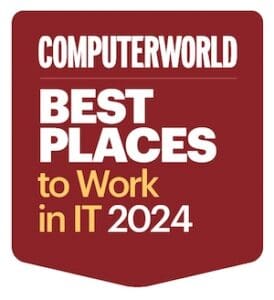This article was originally published in a journal published by Paul Gatling with NWA Business Journal. Click here for the original article.
With much of the nation’s workforce forced to work remotely this past week because of the COVID-19 outbreak across the U.S., many information technology (IT) providers are pitching in to offer guidance.
Northwest Arkansas Business Journal editor Paul Gatling asked the company’s chief technology officer and former CEO Keith Woodruff for his perspective on companies who have transitioned their workforce to remote employees.
Paul Gatling: How can IT providers best be equipped for the challenges for clients who transition to remote/cloud working?
Keith Woodruff: Fundamentally, technology firms must understand each client’s business needs and implement practical technologies that meet these needs. This hasn’t changed with working remote and cloud computing. While these transitions are similar, let’s look at each of these separately.
The transition to the cloud is the physical relocation of a company’s applications and data to someone else’s computer. To be equipped for the challenge of transitioning to the cloud, IT providers need a deep understanding of the client’s infrastructure, applications, and data. Factors to consider include regulatory requirements, business continuity and disaster recovery, processing and storage capacity, bandwidth, and financial implications (capital spend vs. monthly expense). Based on these factors, we see many clients using a hybrid approach that involves some application and data on-premises and some in the cloud.
The transition to home-based-work is the physical relocation of employees. COVID-19 has resulted in a very abrupt transition of millions of workers, teachers, and students from offices and schools to homes. For most, this is not a change in technology but instead a change from occasionally working from home to working from home full-time. To help each of their clients, IT providers need to understand two things. The first relates to the capacity constraints associated with this abrupt transition and helping clients understand and implement more capacity such as additional Virtual Private Network (VPN) licenses, internet bandwidth, multi-factor authentication, or additional home displays. The second is implementing and training around the usage of video conferencing and collaboration tools for communication and coordination among dispersed employees.
IT providers can also help our communities stay in the community. As an example, my wife asked me the other day what would be the best product that she and other women could us to continue a bible study virtually every week. Edafio began using Microsoft Teams for conferencing and collaboration with the relocation of our team during the Arkansas river flood of 2019. We have continued to use Microsoft Teams as a powerful tool for collaboration. In addition to clients, technology firms need to consider how to help communities get through disasters and world-changing events. In the case of COVID-19, this involves ways to work and stay socially connected which mitigates much of the risk of spreading a disease that could easily overwhelm our healthcare infrastructure and the significant loss of life.
PG: What’s the biggest challenge in that transition…for so many people? Say an entire office of 100 to 150 employees?
KW: We think the biggest challenges are communication and social changes of a work-from-home workforce. We believe it requires leadership and team effort to establish a communication rhythm and methods for keeping everyone working together serving clients. Great teams working in an office must figure out how to be a great team when dispersed.
Another factor that we are discussing is the expected norms for work-from-home. Mark Hodges, one of our leaders who has had many years leading a work-from-home team, shared these very insightful practices that we are challenges ourselves to follow:
- Treat work-at-home like a regular workday – dress as you would for work
- Go to work – even if it is just another room
- Consistency is vital – the same spot, same time
- Don’t try to watch the news while working – this is extremely distracting…
- Remember – our mission is serving clients and we are all getting paid to do this
- Mute, Mute, Mute – Unmute only to talk
- Take a lunch break
- Laundry and dishes can wait – do those when you “go home”
- Remember to leave work – keep a balance of work and time away from work
PG: Are there heightened security concerns? Can you mitigate those?
KW: There are security items to consider when working from home. For many companies, these items have already been addressed and mitigated for the occasional work-from-home users. We say that people, process and technology are all critical for great security. Technology is the only one of these three that really changes with work-from-home. We believe multifactor factor authentication and VPNs are “must-haves” for remote users. Additionally, if not already in place, data encryption of user computers mitigates the risk of data compromise from a stolen computer that is now located outside the company’s walls. On the people side, we are reminding our clients and associates to be cautious of malicious phishing emails, text and phone calls using COVID-19 as a topic to compromise security from a fear-based behavior.
PG: From your own business perspective, how has your interaction with your own client base changed this past week? Businesses are reliant on technology and communication. If most businesses/enterprises are now working remotely (and might be for some time), how is that affecting your business? To keep your clients in business?
KW: We’ve seen a focused interest from our clients for the health and safety of their employees, our employees, and their patients and customers. For Edafio and many of our clients, this focused interest resulted in a “work-from-home” decision prior to government directives. We also hear real concerns about the uncertainty of the duration and business impact from COVID-19. Finally, because many of our clients are medical clinics and hospitals, our clients have new processes we must follow in the interest of health and safety when providing on-site support.
This is new territory and we are adjusting and adapting to a new world in how we deliver technology solutions and how we learn to socialize with social distancing with a belief that health and life itself are at risk for each of us as well as others.








